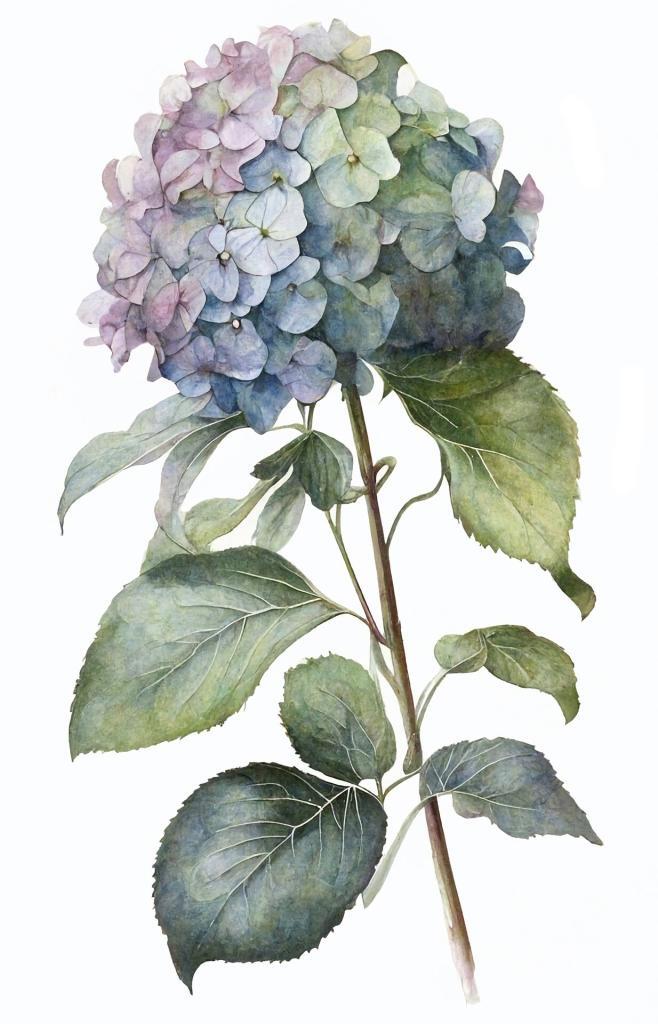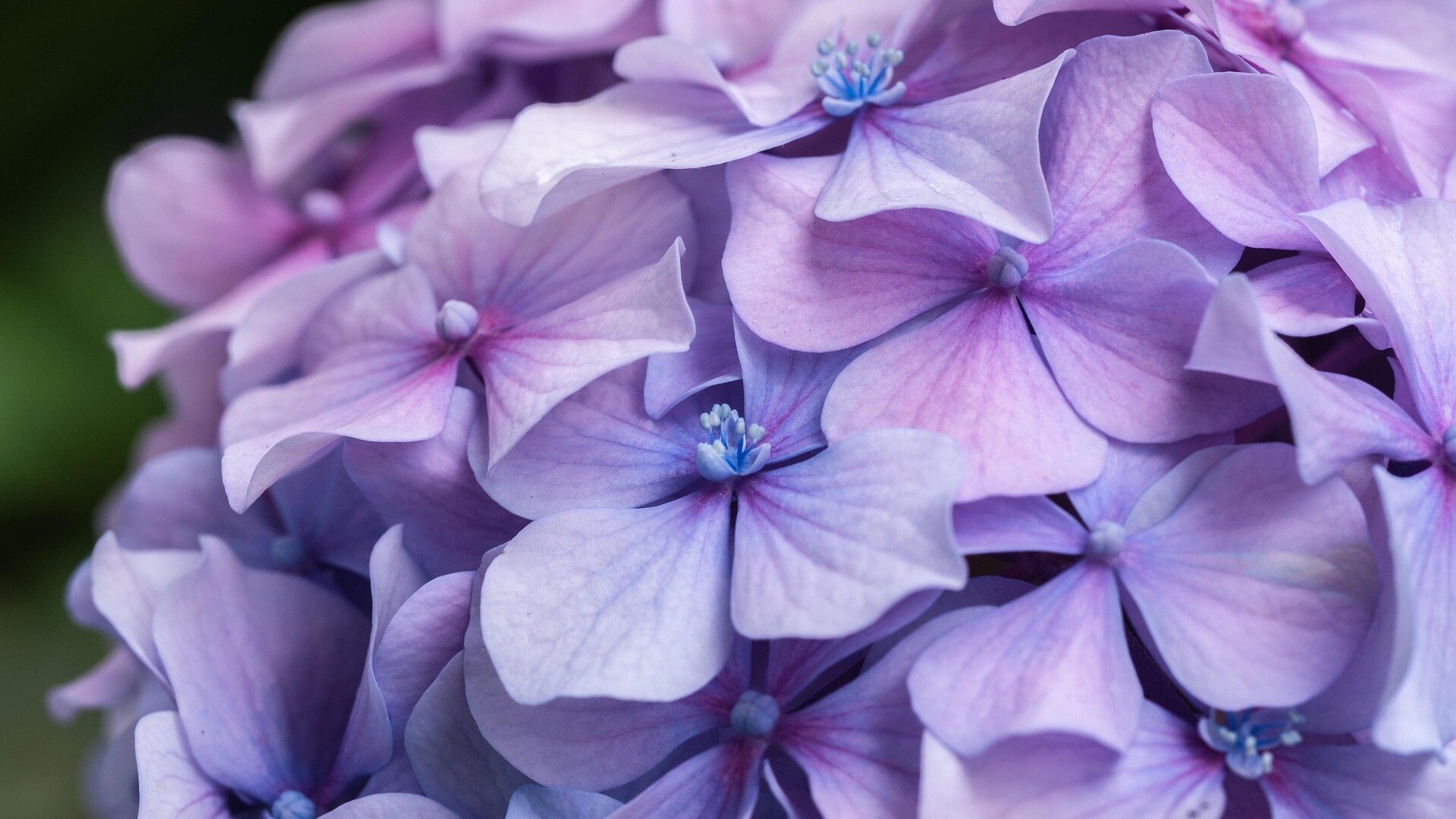The Complete Guide to Hydrangea Care with the Aid of an App
Hydrangeas are beloved flowering shrubs known for their large and vibrant blooms, adding beauty and elegance to any garden or landscape. Hydrangeas have become a popular choice for novice and experienced gardeners with their diverse colors and varieties. However, successful hydrangea care requires a proper understanding of their specific needs. This comprehensive guide will delve into the world of hydrangea care, covering everything from selecting the suitable variety, planting, watering, fertilizing, pruning, and troubleshooting common issues. Following these tips, you can ensure your hydrangeas thrive and showcase their breathtaking blossoms.
Choosing the Right Hydrangea Variety
Before embarking on your hydrangea care journey, selecting the right variety that suits your garden’s conditions and personal preferences is essential. Some popular hydrangea types include:

Bigleaf Hydrangeas / Hydrangea macrophylla. Known for their large, rounded flower clusters, bigleaf hydrangeas are divided into mophead (large, round flowers) and lacecap (flat clusters with a ring of showy flowers surrounding tiny, fertile flowers in the center).
Oakleaf Hydrangeas / Hydrangea quercifolia. These hydrangeas feature cone-shaped flower clusters and distinct lobed leaves resembling oak leaves, which turn vibrant shades of red, orange, and purple in autumn.
Panicle Hydrangeas / Hydrangea paniculata. Panicle hydrangeas offer elongated cone-shaped flower clusters that transform from creamy white to shades of pink as they mature.
Smooth Hydrangeas / Hydrangea arborescens. These hydrangeas have large, round flower clusters and are known for their durability and adaptability to various climates.
Planting and Different Aspects of Hydrangea Care
Location
Hydrangeas generally prefer partial shade or filtered sunlight. Too much direct sunlight can cause the flowers and leaves to wilt, and the plant may become stressed. However, some varieties, such as the paniculata and macrophylla types, can tolerate more sun. It’s best to refer to specific cultivar recommendations for sun tolerance. To prevent scorching of the leaves and flowers, it’s ideal for providing hydrangeas with morning sun exposure. This allows them to benefit from the sunlight without the intense midday heat. Afternoon shade can help shield the plant from excessive heat and intensity. Hydrangeas have delicate stems that strong winds can easily damage. Choose a location that provides some protection from gusty winds, or consider installing a wind.
Here are a few key factors to consider:
Soil
Hydrangeas prefer rich, well-draining soil with a slightly acidic to neutral pH range (around 5.5 to 7.0). Avoid areas with heavy clay soil or poorly drained spots, which can lead to root rot and other issues. When options are limited, amend heavy clay or sandy soils with organic matter like compost to improve moisture retention and fertility.
Planting Process
Dig a hole twice as wide and just as deep as the root ball. Gently remove the hydrangea from its container, ensuring the root ball remains intact. Place the plant in the hole, making sure it sits at the same depth as it did in the container. Backfill the hole with soil, firming it gently around the roots. Water thoroughly to settle the soil and remove any air pockets.
Watering
Proper hydration is crucial for healthy hydrangeas. Follow these guidelines to ensure proper watering:
Hydrangeas generally require 1-2 inches of water per week. Water deeply to encourage deep root growth, rather than frequent shallow watering. Avoid overhead watering, as wet foliage can lead to fungal diseases. Instead, water at the base of the plant or use drip irrigation. Mulch around the base of the hydrangea to retain moisture and suppress weeds.
Fertilizing
Fertilize hydrangeas in early spring, just before new growth begins. Use a balanced slow-release fertilizer with equal parts nitrogen (N), phosphorus (P), and potassium (K), such as a 10-10-10 or 14-14-14 formulation. Follow the package instructions for the appropriate amount to apply based on the size and age of your hydrangea. Sprinkle the fertilizer evenly around the base of the plant, avoiding direct contact with the stems. Gently work the fertilizer into the top layer of soil. Water the plant thoroughly to help the nutrients penetrate the root zone.
Pruning
Pruning hydrangeas is essential for maintaining their shape, promoting healthy growth, and ensuring abundant blooms. However, the pruning requirements vary depending on the hydrangea variety.
a) Bigleaf Hydrangeas (Hydrangea macrophylla):
i. Prune after flowering, in late summer or early fall.
ii. Remove dead or damaged wood.
iii. To control size, selectively remove one-third of the oldest stems, cutting them back to the base.
iv. Avoid extensive pruning in spring, as it may remove potential flower buds.
b) Oakleaf, Panicle, and Smooth Hydrangeas:
i. Prune in late winter or early spring, before new growth appears.
ii. Remove dead, weak, or crossing branches.
iii. To shape the plant or control size, selectively remove stems as needed.
Dealing with Common Issues
Pests: Hydrangeas are generally resistant to pests, but they can occasionally face problems like aphids, spider mites, or scale insects. Use insecticidal soaps or horticultural oils to control infestations.
Diseases: Common diseases affecting hydrangeas include powdery mildew, leaf spots, and root rot. Provide adequate air circulation, avoid overhead watering, and promptly remove and dispose of any infected plant material.
Changing Flower Colors: The flower color of certain hydrangea varieties can change based on soil pH. Acidic soil (pH below 7) produces blue blooms, while alkaline soil (pH above 7) results in pink blooms. Adjust the soil pH using amendments like aluminum sulfate for blue flowers or lime for pink flowers.
How Our App Can Help with Hydrangea Care
Agrio is an Android and iOS application changing how farmers and gardeners diagnose plant issues and get advice on how to grow plants. With the help of artificial intelligence (AI) technology, our app can analyze plant images and provide accurate plant diagnoses. Our latest development takes plant diagnosis to the next level: Harvie, a combination of a large language model (LLM) and computer vision model that can analyze images and text to provide accurate diagnosis and plant health suggestions. Harvie is the first multimodal chatbot related to agriculture and gardening.

Summary
Hydrangeas are magnificent flowering shrubs that bring beauty and charm to any garden. By following the guidelines outlined in this comprehensive guide, you can provide the optimal care for your hydrangeas, ensuring they flourish with stunning blooms year after year. Remember to select the right variety, provide proper planting conditions, water and fertilize adequately, prune as needed, and address any common issues promptly. With a little attention and care, your hydrangeas will reward you with an abundance of vibrant and captivating flowers, creating a breathtaking display in your outdoor space.
